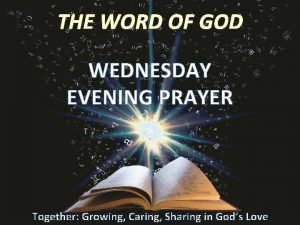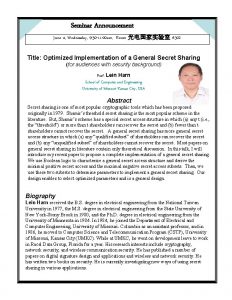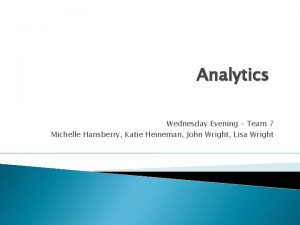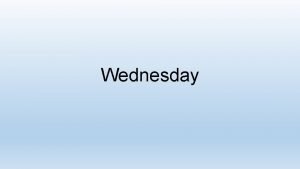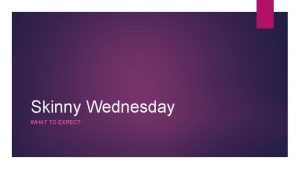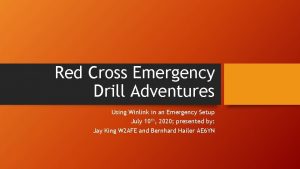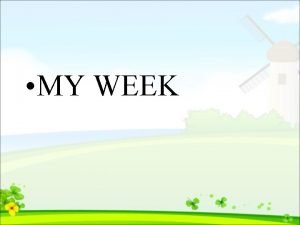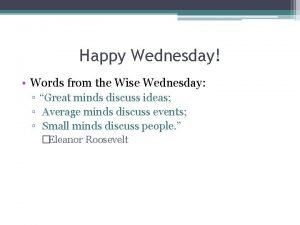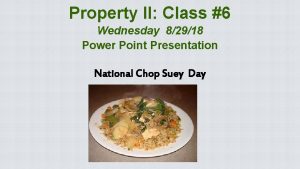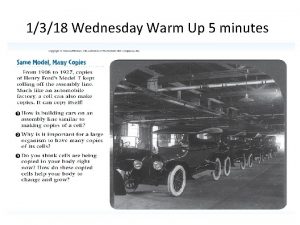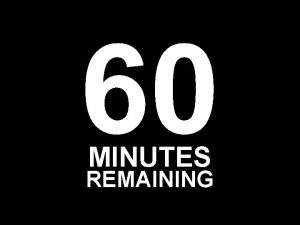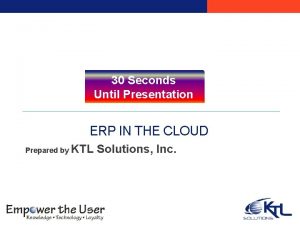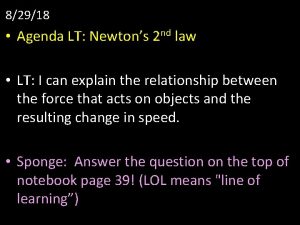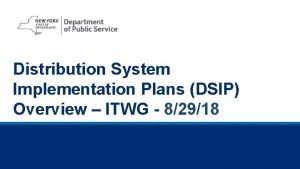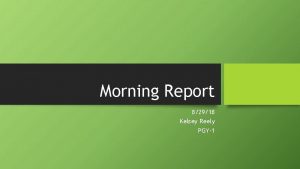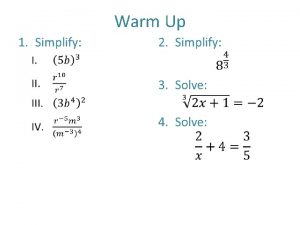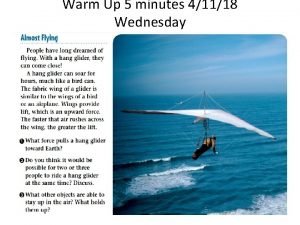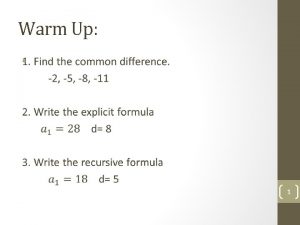Warm Up 4 minutes 82918 Wednesday Answers 1












- Slides: 12

Warm Up 4 minutes 8/29/18 Wednesday

Answers � 1) A window ledge cannot be built perfectly flat. � 2) Doctors depend on measurements of their patients’ bodies, such as body temperature, � 3) A bag of cereal could be measured by weight, by volume, and by nutritional content.

Today Agenda � 1) Warm Up 4 minutes � 2) Lesson 2 Lesson Outline/ Vocabulary 20 minutes � 3) Video and Plicker 20 min � 4) Homework (School to Home- Lesson 2)

LESSON 2 Vocabulary – Lesson 2 Measurement 1. accuracy description of how close a measurement is to an accepted or true value 2. description spoken or written summary of observations 3. digital of, pertaining to, or using numbers (numerical digits) 4. explanation interpretation of observations 5. International System of Units (SI) internationally accepted system for measurement 6. precision description of how similar or close measurements are to each other 7. significant digits number of digits in a measurement that are known with a certain degree of reliability

Lesson Outline- Lesson 2 � A. Description and Explanation � 1. A spoken or written summary of observations is called a(n) description. � a. An observation that uses the senses is called a(n) qualitative observation. b. An observation that uses numbers is called a(n) quantitative observation. � 2. An interpretation of observations is called a(n) explanation. � B. The International System of Units � 1. The internationally accepted system for measurement is the International System of Units (SI). � 2. The seven base units are the meter, kilogram, second, ampere, kelvin, mole, and candela. � 3. A description of how close a measurement is to an accepted value is called accuracy. � 4. A description of how similar or close measurements are to each other is called precision. � C. Measurement and Accuracy � 1. Tools used to measure quantities can limit the accuracy of a measurement. � 2. A thermometer with measurements divided into tenths is more accurate than a thermometer with measurements divided into whole numbers.

D. Significant Digits 1. When you take any measurement, some digits you know for certain and some digits you estimate. � 2. Significant digits are the number of digits in a measurement that are known with a certain degree of reliability. � 3. When you use significant digits, others can know how certain your measurements are. � E. Scientific Tools � 1. A science journal is used to record descriptions, explanations, plans, and steps used in a scientific inquiry. � 2. A(n) balance can be used to measure the mass of an object. � 3. The temperature of substances is measured using a(n) thermometer. � 4. The kelvin is the SI unit for temperature, but in the science classroom, temperature is measured in degrees Celsius. � 5. Thermometers should not be used to stir anything �

E. Scientific Tools � 6. Liquids are held, poured, heated, and measured in laboratory glassware. � 7. A(n) microscope is used to observe small objects that cannot be observed with an unaided eye. � 8. Computers are used to compile, retrieve, and analyze data for reports; to create reports and other documents; to send information to others; and to research information. �a. Hardware is made of the physical components of computers, such as monitors and keyboards. �b. Software is the term used for programs that run on computers.

F. Tools Used by Life Scientists � 1. A handheld lens that magnifies, or enlarges, the image of the objects observed through it is called a(n) magnifying lens. � 2. To prepare objects or substances for observation under a compound microscope, you would use a thin, rectangular piece of glass called a(n) slide. � 3. Scalpels and scissors are dissecting tools that are used to examine tissues, organs, or prepared organisms. � 4. A small glass or plastic tube similar to an eyedropper that is used to draw up liquids and transfer them to another place is called a(n) pipette.

LESSON 2 Difference Between Precision And Accuracy

LESSON 2 Brain Pop- Scientific Method https: //www. brainpop. com/science/scientificinquiry/ scientificmethod/

LESSON 2 Understanding Science Plicker

LESSON 2 Homework- School to Home – Lesson 2
 Why minute has 60 seconds
Why minute has 60 seconds Monday tuesday wednesday thursday friday calendar
Monday tuesday wednesday thursday friday calendar Wednesday evening prayer
Wednesday evening prayer Wednesday seminar
Wednesday seminar Ib history ia grade boundaries
Ib history ia grade boundaries Web analytics wednesday
Web analytics wednesday How to write wednesday
How to write wednesday Happy wednesday february
Happy wednesday february My favourite day is monday
My favourite day is monday Skinny wednesday
Skinny wednesday Flmsg download
Flmsg download Tuesday to saturday
Tuesday to saturday Wise word wednesday
Wise word wednesday


